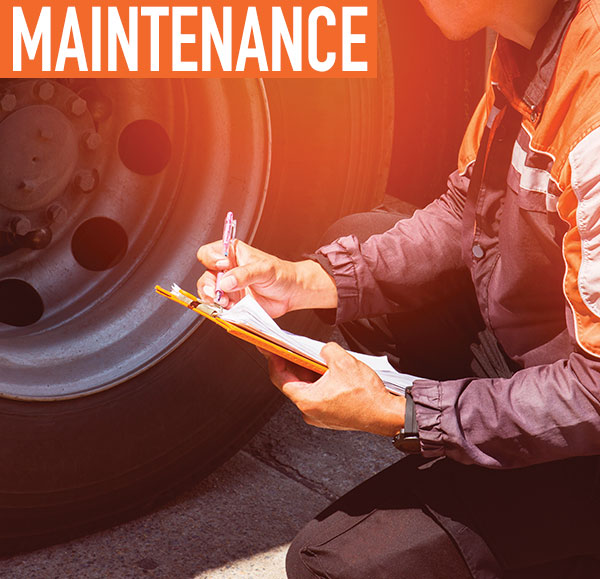We’ve all heard the adage: “You get what you pay for.”
In many cases that’s true. Yet, when it comes to the tires in your fleet, it may not be the case. With tires, you can actually get more than you pay for, and if you do, you’re cutting operational costs significantly since tires often represent the second-highest expense with fuel the highest.
Tires constantly evolve, and work truck applications vary considerably. Tires are far from a commodity item, and tire price points don’t always tell you the “life” you should expect to get from them. Just because you pay more for a tire doesn’t mean you will get higher mileage and more retreads.
When it comes to tires, the only way to determine what’s best for you is to test them for yourself on vehicles operating in your service environment. That means developing an on-going tire evaluation program—an extra step that can help you save significantly. You’ll be comparing tires you currently run with a possible newcomer to your fleet.
Cooper Tire and Rubber Company tests new tires for its Cooper line of commercial tires with a benchmark against tier 1 brands. The tests are macro in scale, and the brand runs the same test with multiple fleets. Cooper Tire then compares the data to see how its tires stack up to the competition.
Unlike a tire company that is testing products day in and day out with dedicated technical professionals and sophisticated equipment, most fleets do not have the capability or capacity to conduct exhaustive testing. Yet, you can still do a valid evaluation within a fleet and get results that give you confidence in what to expect from selected tire brands.
In part one, we discuss evaluations and maintenance.
STEER TIRE EVALUATION
To conduct an apples-to-apples comparison, you need to keep all unnecessary variables out of the equation, which may not be easy in a work truck operation. You should run like-brand and like-model trucks, and they should be the same age with the same specs. In addition, drivers with comparable skill level should run the trucks. Drivers can impact tire performance in subtle ways. Routes and loads should be as similar as possible.
Once proper “like” equipment is identified, you’ll want to outfit four of the trucks with your new evaluation steer tire and outfit another four with the steer tire you’re currently running. You’ll do a head-to-head analysis. There are two reasons to run at least four vehicles: 1) to get a good average wear rate considering any variation in vehicles, routes, or drivers; 2) If you lose a tire due to a road hazard, you will still have three vehicles left running.

Run evaluations with an x-pattern on the two rear axles. Reverse the pattern from one truck to the next.
DRIVE TIRE EVALUATION
Drive tires are somewhat easier to evaluate if trucks have two rear axles. Instead of pitting vehicles against each other, you can use one vehicle to test two brands of tires. The only caveat is that their diameters need to be within 1/4-inch of each other. To put that into perspective, you can run one drive tire with 30/32nds of tread depth and have the competing drive tire within plus or minus 4/32nds of that figure. Any larger variances cause tire scrubbing and inaccurate results.
With this evaluation, you can run two trucks with eight wheel positions. The key is doing an X-pattern (or cross-axle) on the two rear axles. (Refer to the graphic on page 35.) However, don’t run the tires identically on the two trucks as different positions tend to have different wear rates. For example, tires on the trailing axle typically wear faster than the forward axle, and there can be side-to-side differences. So, be sure to reverse the X pattern from one evaluation truck to the next truck. For trucks with a single rear axle with duals, you could follow the example above by using two or four trucks and putting standard tires on the left side of half the vehicles and on the right of the other half and vice versa for the evaluation tires.
For trucks with single tires on the rear axle, conduct the test the same as for steer tires.
MAINTENANCE PRACTICES
Once tires are mounted, start the evaluation properly by having each vehicle undergo a total vehicle alignment on the front and rear axles. Once that’s done, you should not have to do a realignment during the evaluation period unless you detect irregular wear or have a suspension issue with a vehicle.
It’s important to have the drivers conduct proper pre-and post-trip inspections. And that means tire inflation needs to be checked properly—not with a tire thumper. Tires need to be gauged to ensure tire inflation pressure is at the pre-defined level for the specific position. To make it easy on your drivers, install flow-through valve caps so they don’t have to spend time taking off valve caps.
What’s more, drivers must keep their eyes (and fingers) on the tires to inspect for wear—a weekly fingertip diagnostic (simply running a hand over the tread) can detect signs of irregular wear. Should toe or feather wear be found for example, it could mean an alignment problem, suspension problem, or bent tie rod.
If drivers detect early signs of irregular wear, your fleet can fix the underlying problem and continue with the evaluation. Be sure to keep record of any wear issues and vehicle adjustments.
EVALUATION PERIODS
Evaluation units should be checked at intervals that correspond to about 20% of typical tire life. The main item to analyze is tread wear, and for this you need a quality tread depth gauge that measures to 1/32 or 1mm. Electronic gauges with digital readouts are easiest to read. When checking the tire, you should have three points for gauging across the tread face—the outside, middle, and inside of the tread. Again, a fingertip diagnostic should be conducted as well and any signs of irregular wear reported. Irregular wear could indicate a problem with the vehicle, as mentioned earlier. If the irregular wear is found to be severe in the drive position, rotate the tires in cross axle design (for example, LRI and O to RFI and O). However, don’t rotate side-to-side.
WHAT’S NEXT
Next month in Part 2, we’ll discuss casing and retread evaluations as well as how to determine cost-per-mile and the effects tires have on fuel economy.
ABOUT THE AUTHOR
Phillip Mosier is the manager of commercial tire development at Cooper Tire and Rubber Company.
MODERN WORKTRUCK SOLUTIONS:
OCTOBER 2019 ISSUE
Did you enjoy this article?
Subscribe to the FREE Digital Edition of Modern WorkTruck Solutions magazine.





